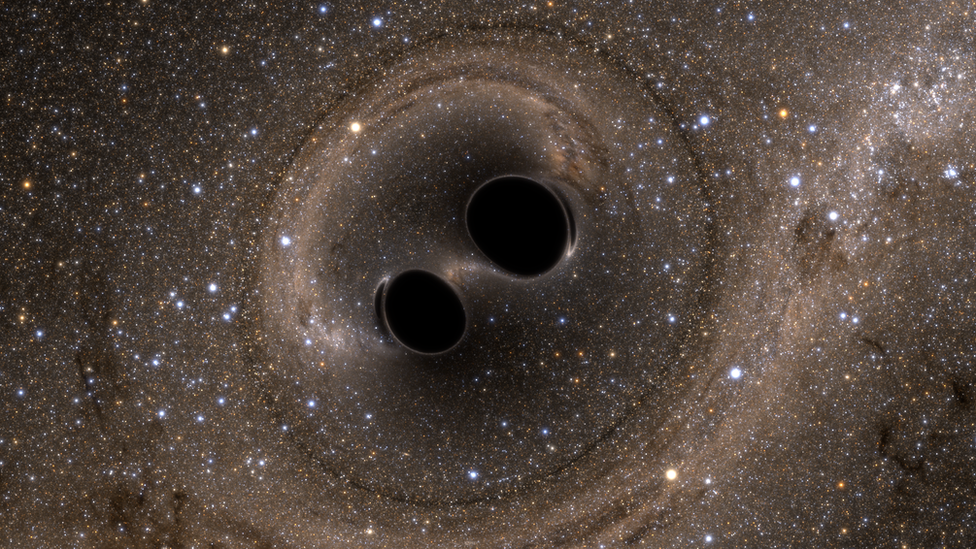Gravitational waves: Monster black hole merger detected
- Published
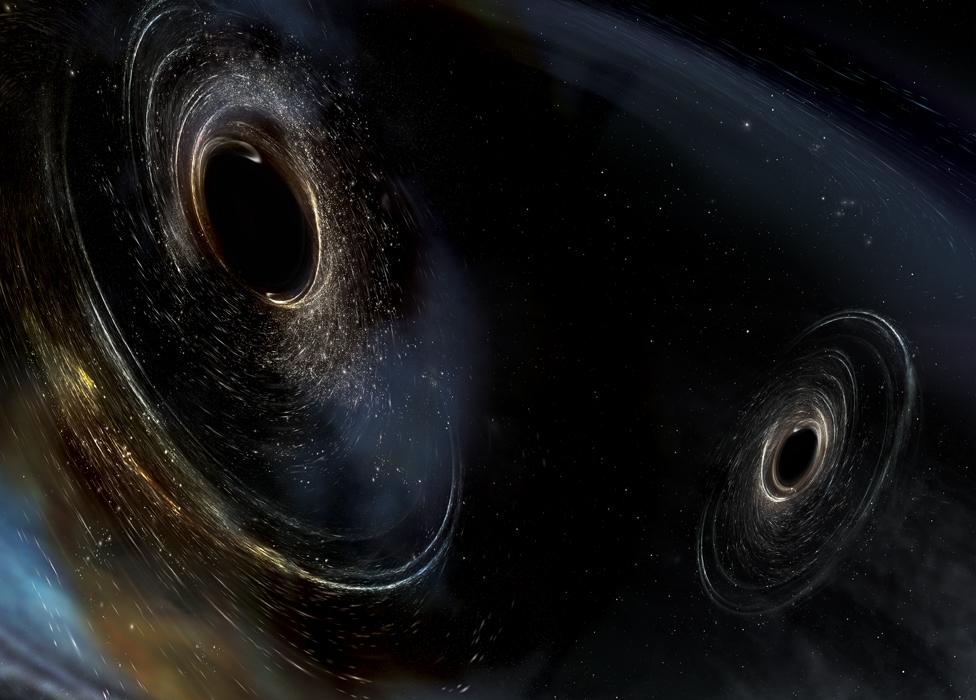
Artwork: The coalescing objects produced a single black hole over 80 times the mass of our star
Gravitational waves have been picked up from the biggest black hole merger yet detected.
Scientists say their laser labs sensed the ripples in space-time emanating from this gargantuan collision on 29 July 2017.
The event saw two holes, weighing more than 50 and 34 times the mass of our Sun, uniting to produce a single object over 80 times the mass of our star.
It happened at least five billion light-years from Earth.
The discovery follows a major data re-analysis project, external.
Researchers from the LIGO-VIRGO Collaboration have also listed three other black hole mergers that were missed in the initial run-though of the data; and the promotion to full detection status of a previously uncertain "candidate".
The re-analysis brings the total number of gravitational waves events now in the catalogue to 11. Ten are black hole mergers; one occurrence was the result of a collision between dense star remnants, so-called neutron stars.
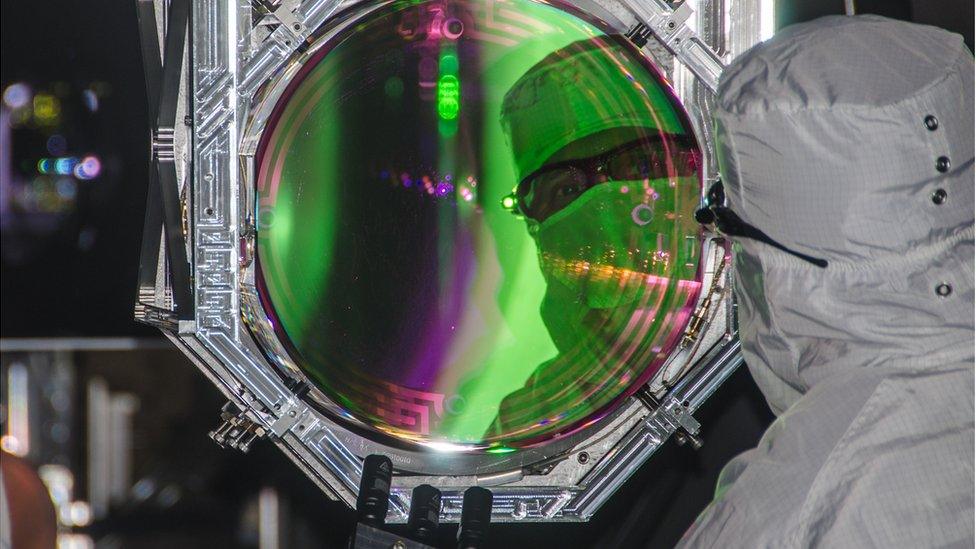
The LIGO and VIRGO laser instruments are among the most sensitive scientific tools ever built
Why have the detections come to light now?
The international collaboration operates three laser interferometer facilities - in Washington and Louisiana states in the US, and Pisa province in Italy.
Their super-sensitive instruments "listened" for gravitational waves emanating from cosmic events during two periods, across 2015, 2016 and 2017.
Algorithms hunting through the colossal streams of data saw what they regarded as the obvious patterns relating to gravitational waves at the time, but it was always planned to go back through the data and do a reassessment.
Writing on his blog at the weekend, external, collaboration member Prof Shane Larson from Northwestern University, in Evanston, said: "Since [the initial discoveries], we've been sifting through the data, looking at every feature, comparing it to our astrophysical predictions, cross-checking it against monitors that tell us the health of the instruments, determining if it appears in all the detectors, and using our most robust (but slow-running) super-computer analysis codes."
It is this fine-tooth comb search that has thrown up the new black hole mergers. All of the new detections come from the second period of operation, which ran for nearly nine months from November 2016 to August 2017.
In the catalogue, external, they are given the "GW" prefix, for "Gravitational Waves", followed by the date (yr/month/day) of occurrence: GW170729, GW170809, GW170818 and GW170823.

Gravitational waves - Ripples in the fabric of space-time
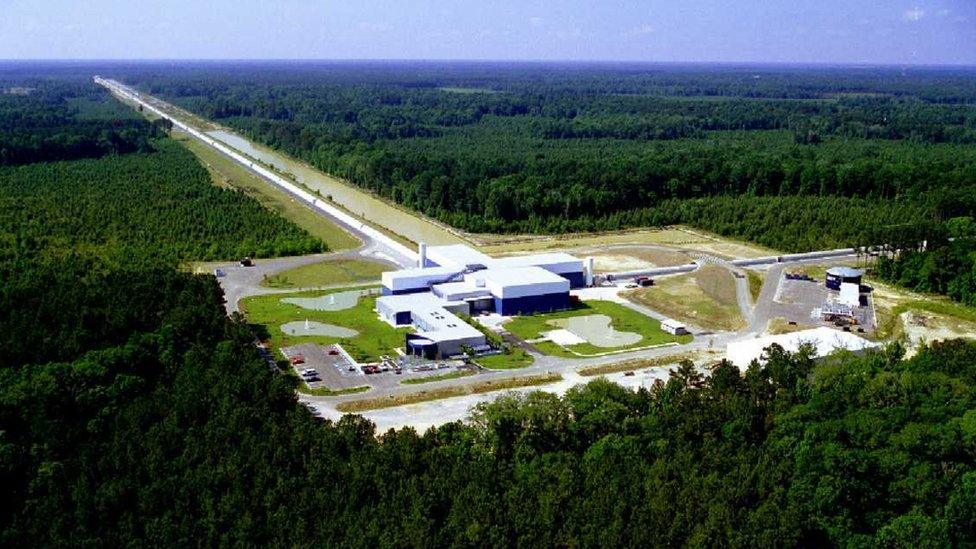
The LIGO Louisiana lab has 4km-long pipes running out from its control centre
Gravitational waves are a prediction of the Theory of General Relativity
It took decades to develop the technology to directly detect them
They are ripples in the fabric of space-time generated by violent events
Accelerating masses will produce waves that propagate at the speed of light
Detectable sources include merging black holes and neutron stars
LIGO/VIRGO fire lasers into long, L-shaped tunnels; the waves disturb the light
Detecting the waves opens up the Universe to completely new investigations

What of the uncertain candidate?
The advanced laser labs in Washington and Louisiana began their first science run in September 2015 and almost immediately made the historic detection of a black hole merger on 14 September (GW150914), a discovery that would later earn a Nobel Prize.
But less than a month later, the alarms triggered again at the labs to raise the possibility of a second detection. At the time, scientists didn't think this event met the necessary criteria for a confident discovery, and so they labelled it LVT151012, where LVT stood for "LIGO-VIRGO Trigger".
It was frequently mentioned in communications, but could not really be counted in the catalogue of full detections.
This has now changed following the re-analysis. The criteria are met and the LVT prefix is replaced with GW.
Prof Christopher Berry at Northwestern called GW151012 a "Cinderella story, a quiet signal who could".
Allow X content?
This article contains content provided by X. We ask for your permission before anything is loaded, as they may be using cookies and other technologies. You may want to read X’s cookie policy, external and privacy policy, external before accepting. To view this content choose ‘accept and continue’.
What do these extra detections mean?
The hunt for gravitational waves is a game of statistics.
From the number of detections so far made, scientists can extrapolate the likely number of black holes in a given volume of space. So, that number has just gone up.
Also, the expanded catalogue tells us something about the probable future success of the laser laboratories.
They are currently offline for upgrades that will improve their performance.
When they come back online in spring next year, they should have the ability to sense twice the distance, with hopefully therefore eight times the detection rate.
We are rapidly moving towards a time when the detection of gravitational waves becomes a daily occurrence.
And as that happens, new details will emerge about the nature of black holes and neutron stars, and - with luck - about some completely novel and unexpected sources of gravitational waves.
Jonathan.Amos-INTERNET@bbc.co.uk, external and follow me on Twitter: @BBCAmos, external
- Published17 October 2017
- Published16 October 2017
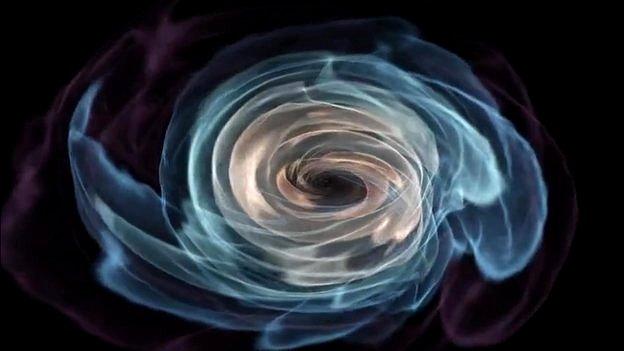
- Published3 October 2017
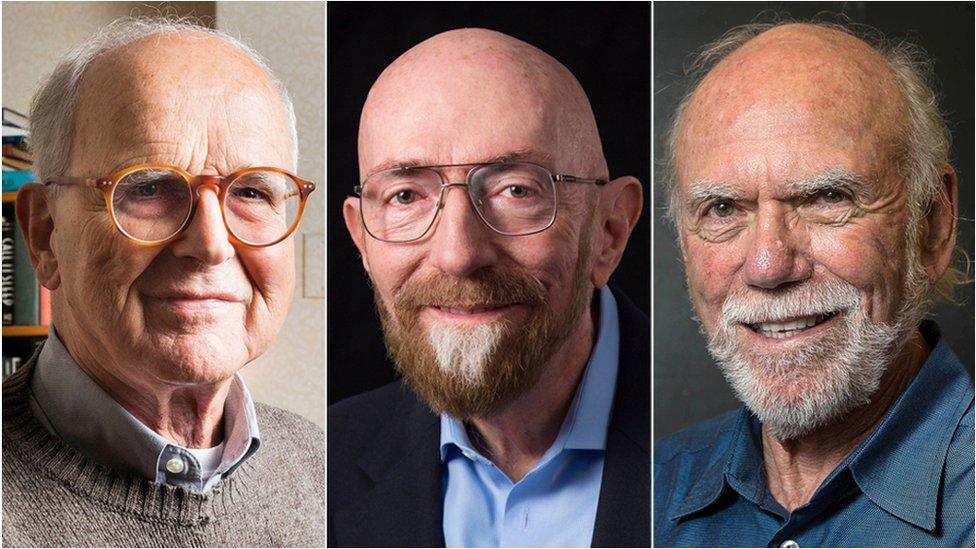
- Published20 June 2017

- Published12 February 2016
- Published11 February 2016
